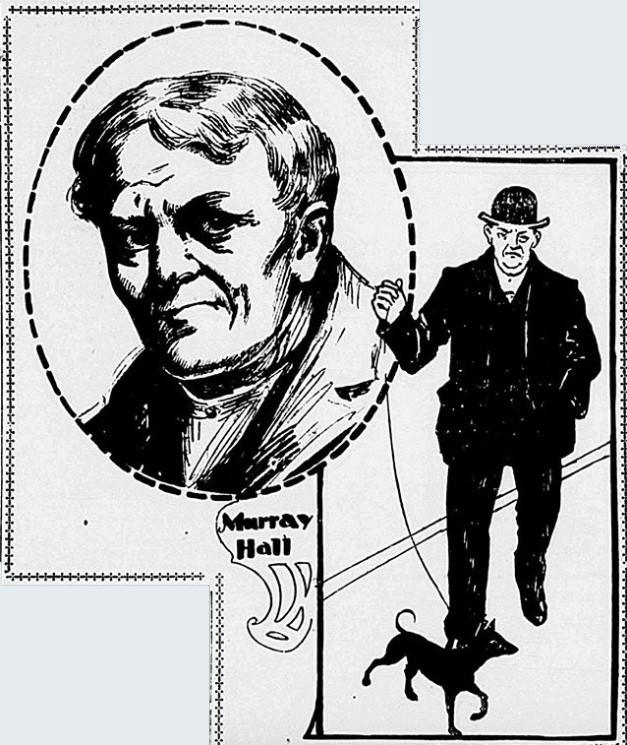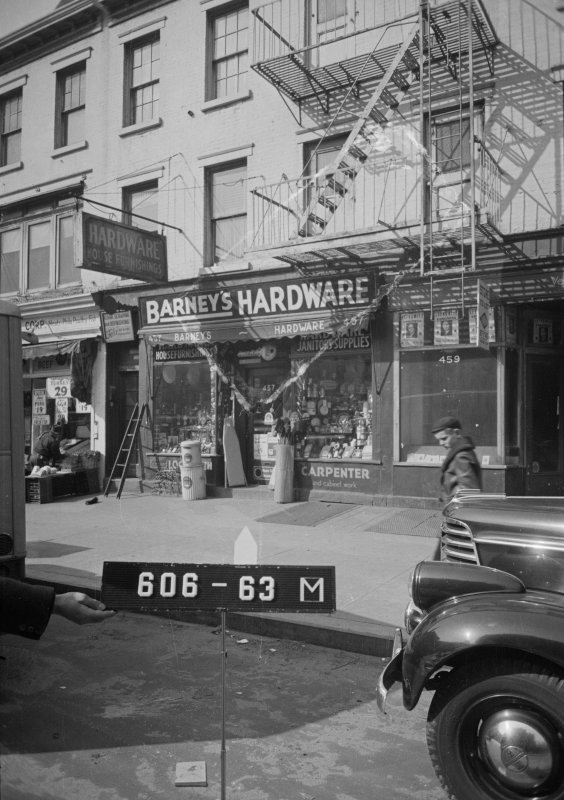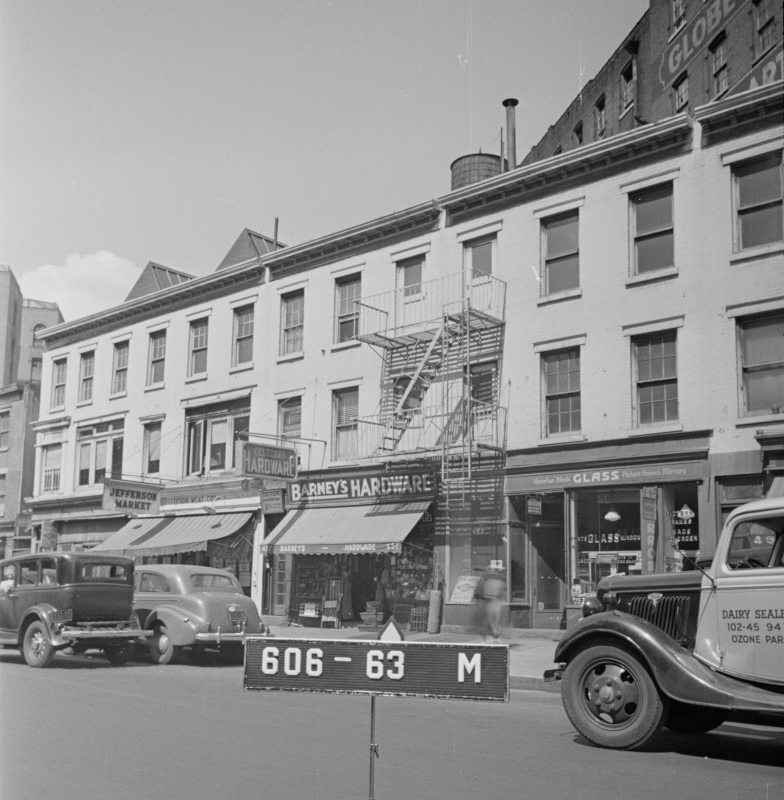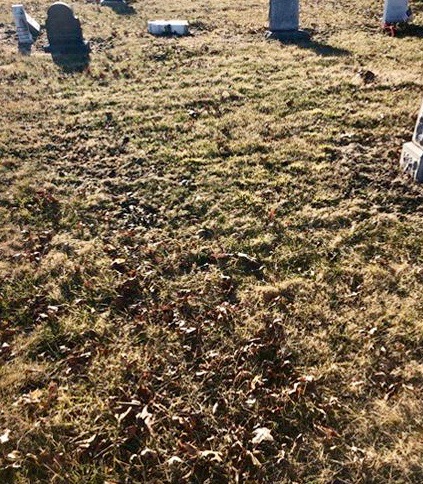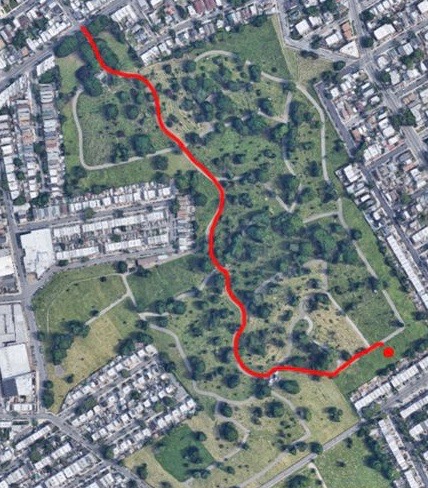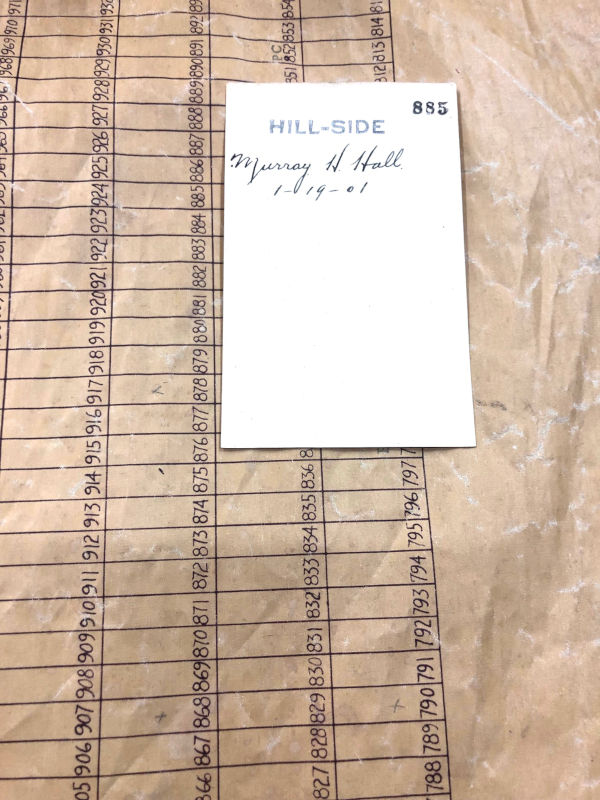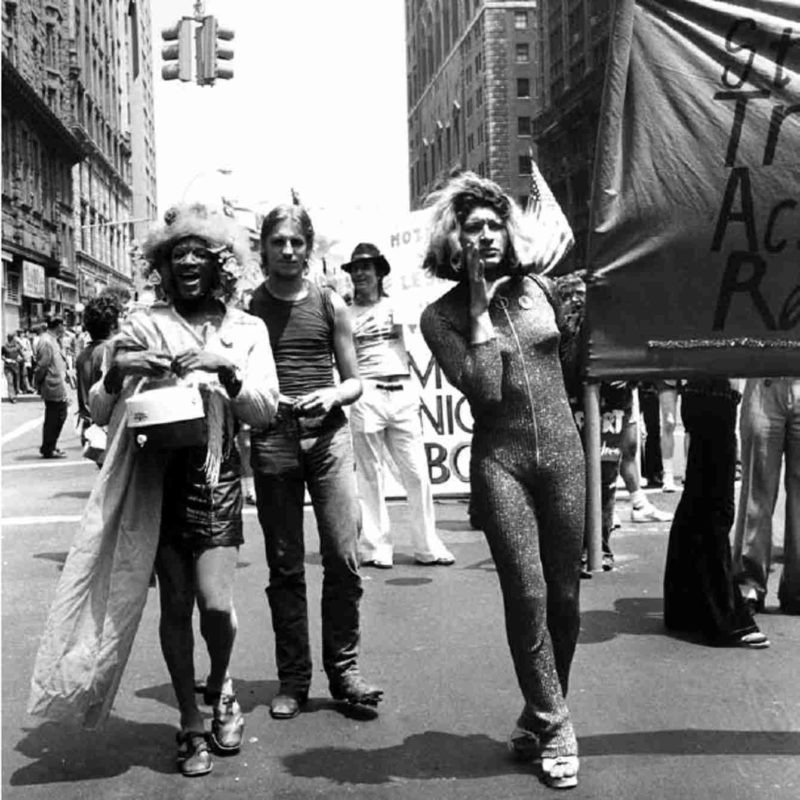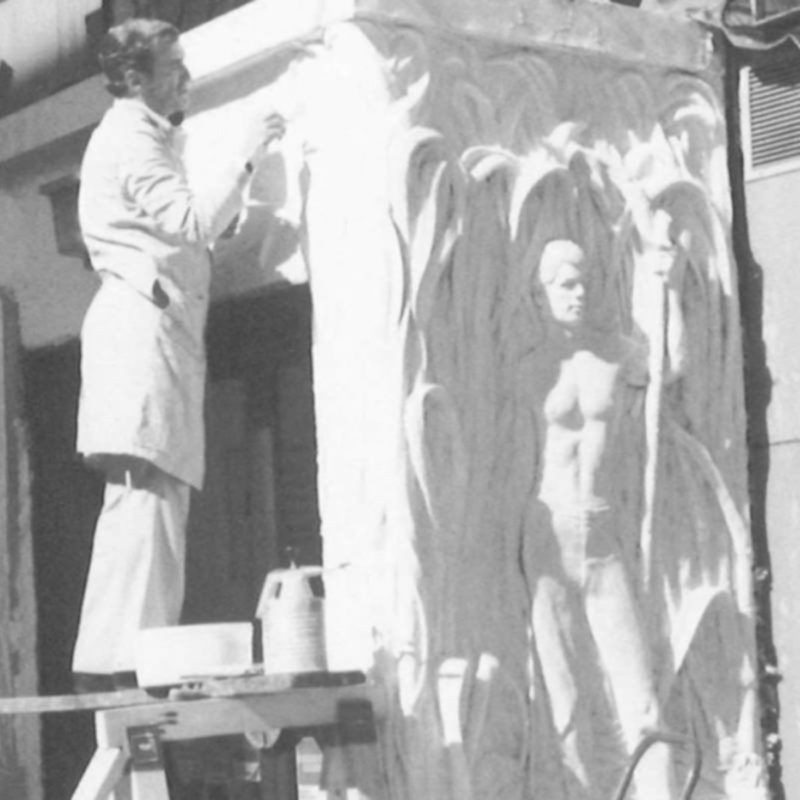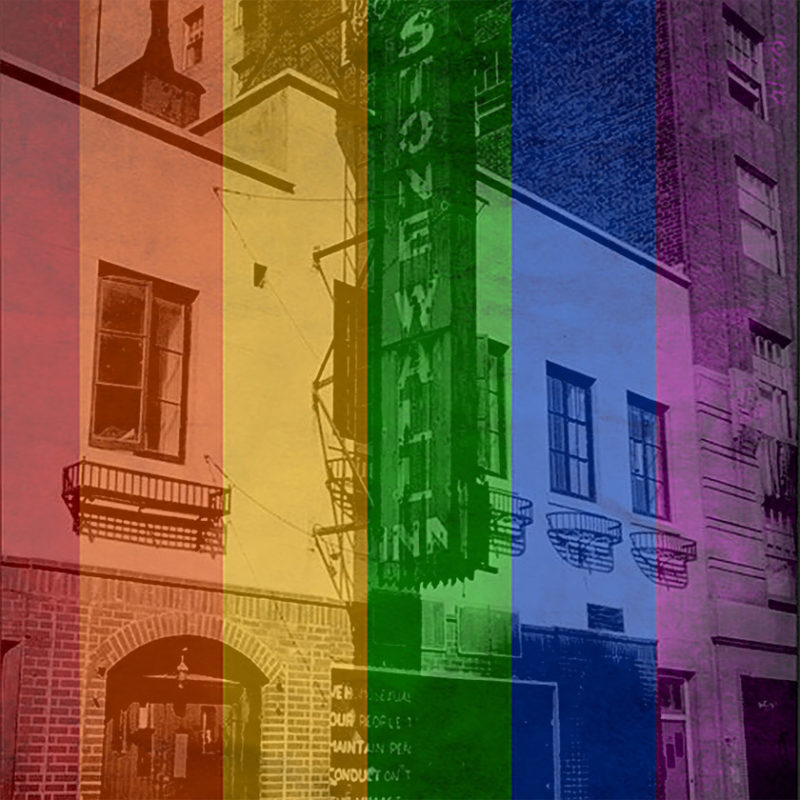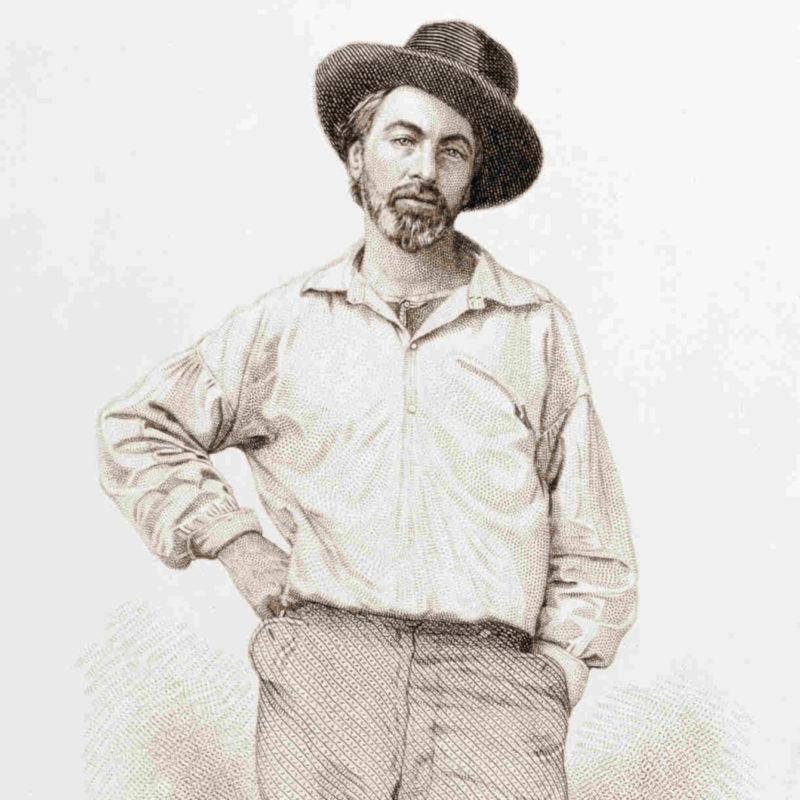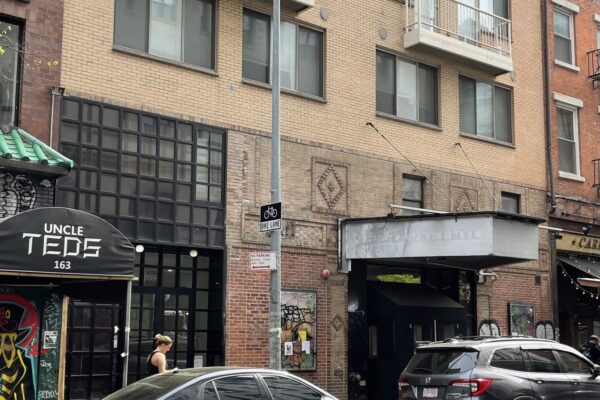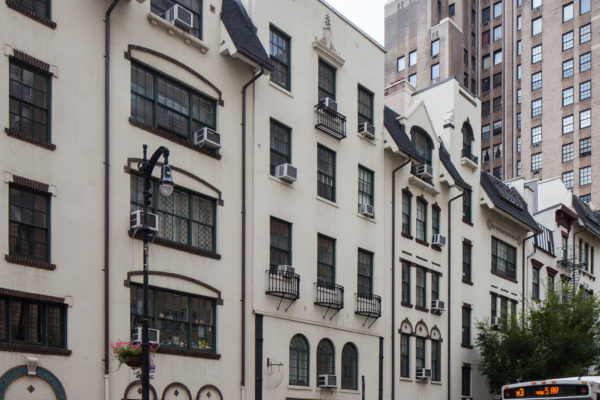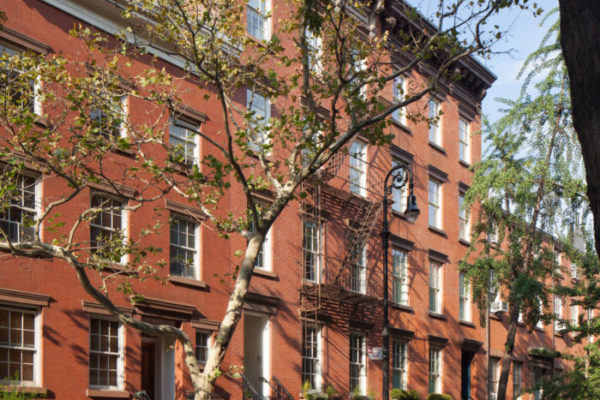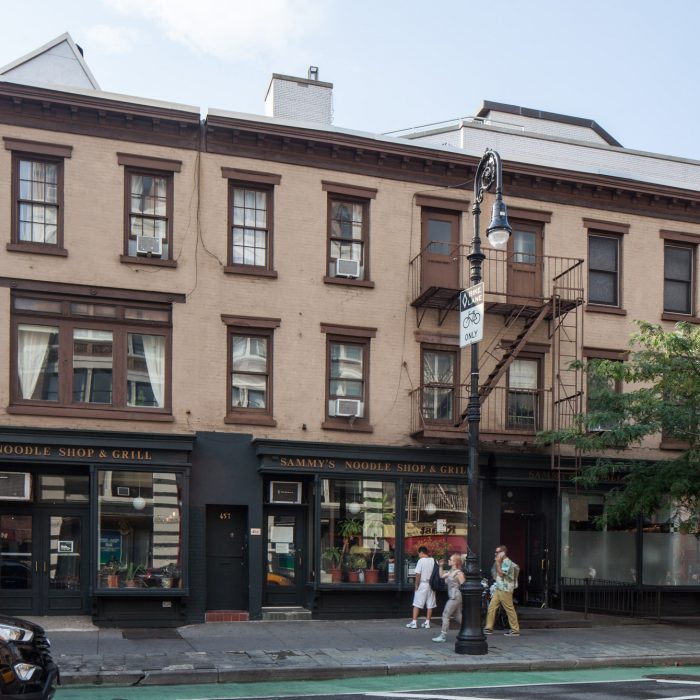
Murray Hall Residence
overview
This rowhouse near the Jefferson Market police court (now the Jefferson Market Library) was the last residence and office of well-known Tammany politico Murray Hall, who today would be considered gender variant.
Following Hall’s 1901 death, the New York Times reported that Hall’s “true sex” was revealed by the doctor.
On the Map
VIEW The Full MapHistory
Murray Hall (Murray Hamilton Hall; c. 1840-1901) was a Tammany politico who lived as a man for decades without his gender being questioned. Following Hall’s death, however, the New York Times reported that Hall’s “true sex” was revealed by the doctor. As an early instance of a gender variant person in New York, this attracted worldwide attention, including that of pioneering English sexual psychologist Havelock Ellis.
According to one source, Hall was born Mary Anderson in Scotland and around age 16 began dressing as a male, taking the name John Anderson. Anderson married young, but had a roving eye and a jealous wife who disclosed Anderson’s gender to the police. Fearing arrest, Anderson fled to America in 1870 and assumed the name Murray Hamilton Hall.
In 1872, Hall married Cecilia Florence Lowe, a schoolteacher, and by 1874 Hall had established an employment agency chiefly representing domestic help. The couple moved several times but remained close to the Jefferson Market police court (now the Jefferson Market Library) since Hall was also a bail bondsman. Hall’s last home and office was an upper-story apartment at 457 Sixth Avenue.
[Hall was a] ‘man about town,’ a bon vivant, and all-round ‘good fellow’…never exciting the remotest suspicion as to her real sex.
As a Tammany figure, Hall played poker and pool with city and state officials and political leaders and was often able to secure appointments for friends.
Hall, who died on January 16, 1901, was buried in Mount Olivet Cemetery in Maspeth, Queens, three days later.
Entry by Jay Shockley, project director (March 2017).
NOTE: Names above in bold indicate LGBT people.
Building Information
- Architect or Builder: Unknown
- Year Built: 1852
Sources
Christopher D. Brazee, Gale Harris, and Jay Shockley, “150 Years of LGBT History,” New York City Landmarks Preservation Commission (June 2014).
Murray Hall Fooled Many Shrewd Men,” The New York Times, January 19, 1901, p. 3. [source of pull quote]
Paula Martinac, The Queerest Places: A Guide to Gay and Lesbian Historic Sites (New York: Henry Holt & Co., 1997).
Do you have more information about this site?
This project is enriched by your participation! Do you have your own images of this site? Or a story to share? Would you like to suggest a different historic site?
